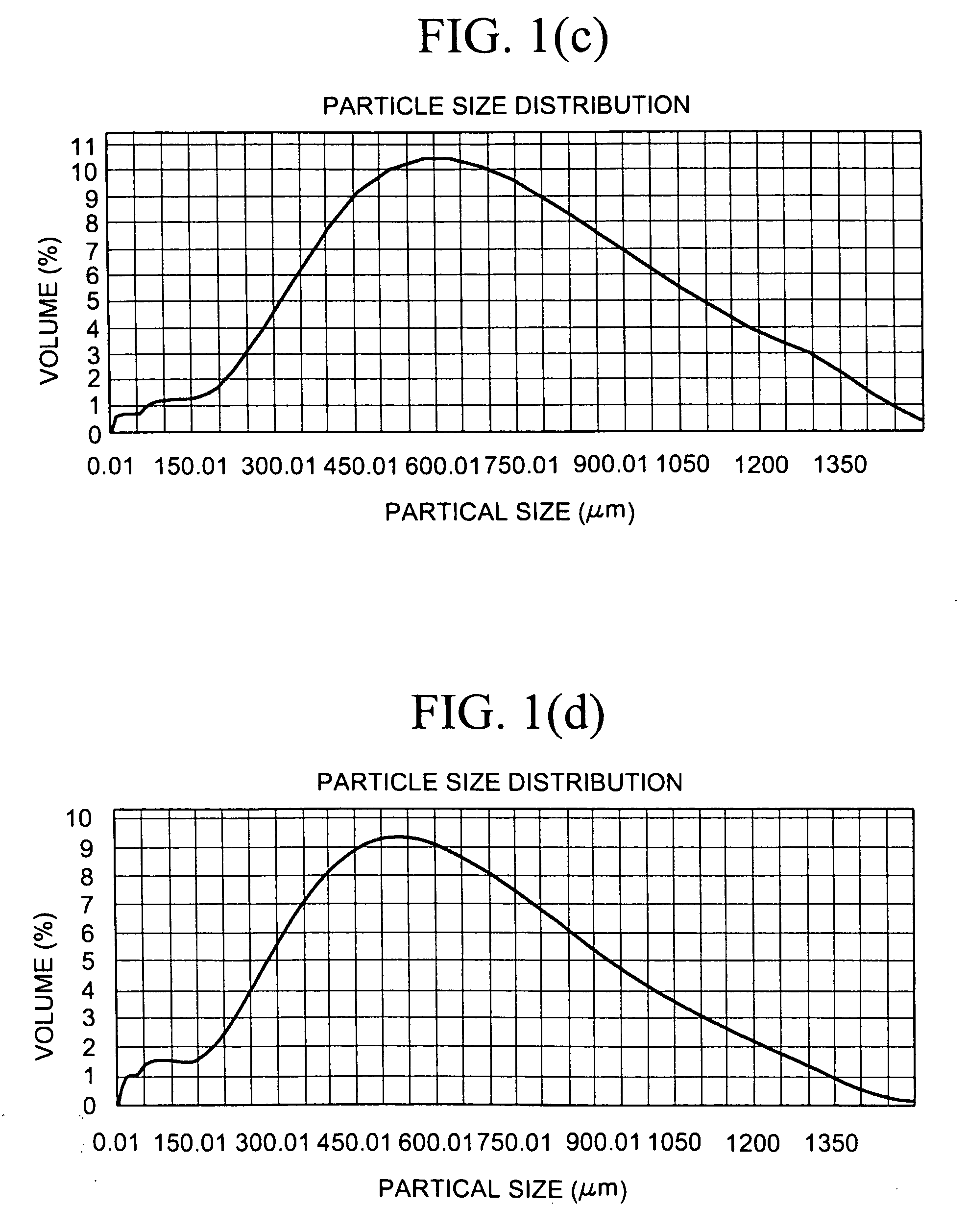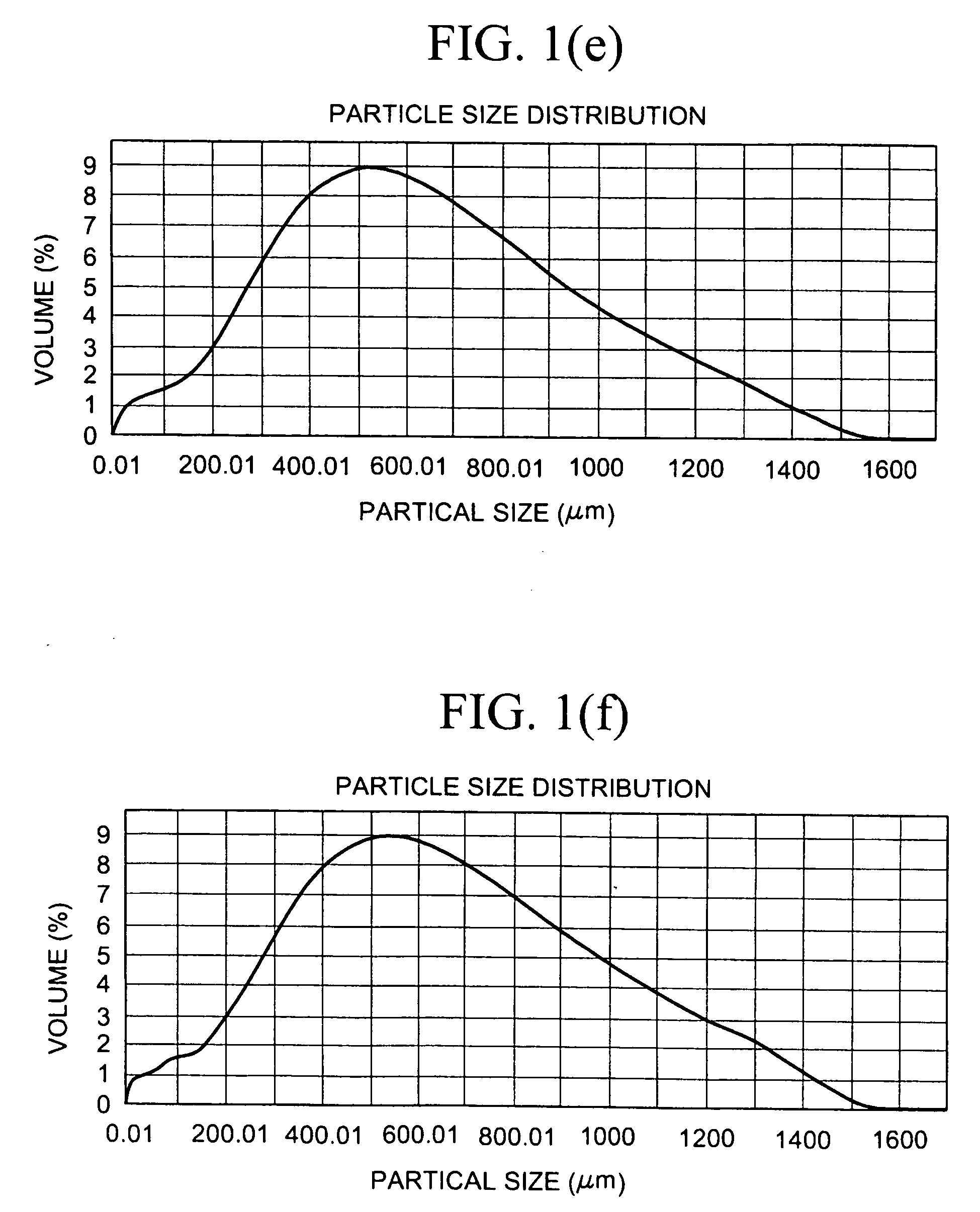Pharmaceutical compositions
a technology of polyamine particles and compositions, applied in the field of pharmaceutical compositions, can solve the problems of less than optimal phosphate binding properties, affecting the stability of phosphate binding, and severe abnormalities in calcium and phosphorus metabolism, so as to improve enhance the acid stability of crosslinked polyamine particles, and improve the effect of acid stability
- Summary
- Abstract
- Description
- Claims
- Application Information
AI Technical Summary
Benefits of technology
Problems solved by technology
Method used
Image
Examples
examples
Preparation I
Crosslinked Polyallylamine Carbonate Particles Examples (1-13)
[0488]Preparation of Stock Polyallylamine Solution: 1400.00 grams of a 50% (w / w) aqueous solution of polyallylamine hydrochloride was placed in a 5 L plastic bottle. 2100 grams of deionized (DI) water was added and the resulting solution was stirred for approximately 15 minutes. While stirring, 40%-50% (w / w) NaOH solution was slowly added until a pH of approximately 10. The resulting solution was stirred until a homogenous room temperature solution was obtained.
[0489]Preparation of Crosslinked Polyallylamine: 553.1 grams of the stock polyallyamine solution, was placed in a 1 L beaker, stirred and cooled to a temperature of between 0 to 5° C. using an ice bath. 8.4 ml of epichlorohydrin was added and the solution was stirred with cooling for 1 hour. The mixture was allowed to warm to room temperature and was stirred until the formation of a gel, at which point the mixture was allowed to stand at room temperatu...
preparation ii
Crosslinked Polyallylamine Carbonate Particles (Examples 14-19)
[0493]Polyallylamine carbonate was prepared as in Preparation I with the following procedural differences: 1) at the end of the 17 to 18 hours, the room temperature crosslinked polyallylamine gel was not wet milled to a desired constituent particle size and was instead broken into pieces manually, diluted with DI water and filtered; and 2) the off-white solid gel was removed from the forced air oven and ground using a potato masher against a hard surface to yield crosslinked polyallylamine carbonate particles. These particles were fractionated into aggregate particles having the sizes noted in Table 4A using 20 and 50 mesh sieves.
Preparation III
Crosslinked Polyallylamine Carbonate Particles (Examples 20-21)
[0494]Polyallylamine carbonate was prepared as in Preparation II with the following procedural difference: the polyallylamine stock solution was at room temperature when the epichlorohydrin was added, instead of at 0 t...
example 55
[0510]10 g of constituent particles of sevelamer carbonate having a mean particle size of 90 μm were hydrated in 50 ml of water and a sample was tested for % Loss on Drying (% LOD) as described in the Test Procedures, giving a % LOD of 82%. The wet sevelamer carbonate was sieved using a 1.4 mm sieve. A first portion was dried at room temperature for seven days in a desiccator using P2O5 as a desiccant. After drying the material was acid treated, 250 mg of the dry material was placed in 5 ml (1 N HCl) and mixed on an orbital shaker at room temperature for two hours. The resulting material fell completely apart. A second portion of the sieved wet sevelamer carbonate was (instead of being dried for seven days at room temperature) dried on a drying tray, in a forced-air hot oven, having a 1 cm bed height at 110° C. for 4 hours. This material was then acid treated, as above, and resulted in particles, as measured by a Malvern Mastersizer, with a volume weighted mean (VWM) size of 336 μm....
PUM
| Property | Measurement | Unit |
|---|---|---|
| Temperature | aaaaa | aaaaa |
| Temperature | aaaaa | aaaaa |
| Temperature | aaaaa | aaaaa |
Abstract
Description
Claims
Application Information
 Login to View More
Login to View More - R&D
- Intellectual Property
- Life Sciences
- Materials
- Tech Scout
- Unparalleled Data Quality
- Higher Quality Content
- 60% Fewer Hallucinations
Browse by: Latest US Patents, China's latest patents, Technical Efficacy Thesaurus, Application Domain, Technology Topic, Popular Technical Reports.
© 2025 PatSnap. All rights reserved.Legal|Privacy policy|Modern Slavery Act Transparency Statement|Sitemap|About US| Contact US: help@patsnap.com



